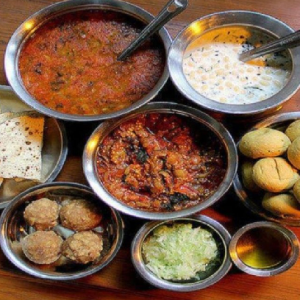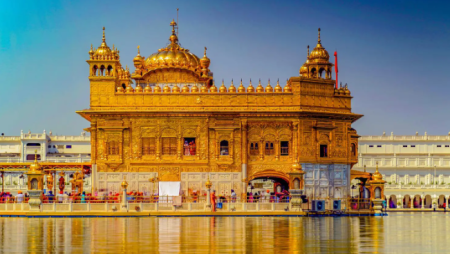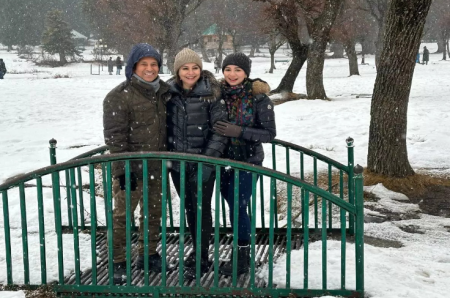Ahmedabad: A Tapestry of History and Heritage
Ahmedabad, the vibrant capital of Gujarat, is a city steeped in history and adorned with architectural marvels. Its rich heritage is evident in its ancient mosques, intricate temples, and colonial-era buildings.
Ahmedabad’s Architectural Legacy:
Ahmedabad boasts a treasure trove of architectural wonders, including the Jama Masjid, one of the largest mosques in India. Its intricate carvings and towering minarets are a testament to the city’s Islamic heritage. The Sidi Saiyyed Mosque, with its intricate stone tracery, is another architectural gem.
The city’s colonial past is reflected in the elegant Town Hall and the High Court, both built in the Indo-Saracenic style. The Sarkhej Roza, a 15th-century tomb complex, is a stunning example of Indo-Islamic architecture.
Historical Sites and Cultural Experiences:
Ahmedabad is home to several historical sites that offer a glimpse into the city’s past. The Calico Museum of Textiles showcases a vast collection of Indian textiles from various regions and periods. The Gujarat Science City is a popular destination for science enthusiasts, offering interactive exhibits and educational programs.
The city’s cultural scene is vibrant, with numerous art galleries, theaters, and music venues. The Sabarmati Ashram, where Mahatma Gandhi lived and worked, is a pilgrimage site for many.
Food and Shopping Delights:
Ahmedabad’s culinary scene is a blend of Gujarati and international flavors. From traditional Gujarati thalis to street food delicacies, there’s something for every palate. The city is also known for its shopping, with bustling markets offering everything from textiles to handicrafts.
Surat: The Diamond City
Surat, located on the banks of the Tapi River, is renowned as the “Diamond City” of India. It is a major center for diamond cutting and polishing, and its wealth is reflected in its opulent temples and mansions.
Surat’s Diamond Industry:
Surat is home to a thriving diamond industry, with numerous diamond cutting and polishing factories. Visitors can witness the intricate process of transforming rough diamonds into sparkling gems. The Surat Diamond Bourse, one of the largest diamond exchanges in the world, is a testament to the city’s importance in the global diamond trade.
Historical and Cultural Heritage:
Surat has a rich history dating back to the Mughal era. The Surat Castle, built in the 16th century, is a reminder of the city’s past as a major port. The Dutch Garden, established in the 17th century, is a serene oasis amidst the bustling city.
The city’s cultural heritage is evident in its numerous temples, including the Ambaji Mata Temple, one of the most revered pilgrimage sites in Gujarat. Surat is also known for its traditional Gujarati cuisine, with dishes like dhokla and khaman being local favorites.

Shopping and Entertainment:
Surat is a shopper’s paradise, with numerous markets and malls offering a wide range of products. The city’s textile industry is well-known, and visitors can find a vast selection of fabrics and garments.
Surat also offers a variety of entertainment options, including movie theaters, amusement parks, and waterparks. The Dumas Beach, located on the outskirts of the city, is a popular destination for locals and tourists alike.
Vadodara: The Cultural Capital of Gujarat
Vadodara, formerly known as Baroda, is the third-largest city in Gujarat and is renowned for its cultural heritage and educational institutions. It is home to several museums, art galleries, and theaters.
Vadodara’s Cultural Legacy:
Vadodara is known as the “Cultural Capital of Gujarat” due to its rich artistic and literary traditions. The city is home to the Maharaja Sayajirao University of Baroda, one of the oldest and most prestigious universities in India.
The Laxmi Vilas Palace, the former residence of the Gaekwad rulers, is a magnificent example of Indo-Saracenic architecture. The palace houses a museum showcasing the royal family’s collection of art and artifacts.
Museums and Art Galleries:
Vadodara boasts several museums and art galleries that offer a glimpse into the city’s cultural heritage. The Baroda Museum and Picture Gallery houses a vast collection of paintings, sculptures, and artifacts from various periods. The Maharaja Fateh Singh Museum showcases the history of the Gaekwad dynasty.
The city is also home to numerous art galleries, including the Gallery of Fine Arts and the Art Heritage Gallery, which showcase works by local and international artists.
Education and Research:
Vadodara is a major educational hub, with several renowned institutions of higher learning. The Maharaja Sayajirao University of Baroda is known for its research in various fields, including science, technology, and the arts.
The city is also home to the National Institute of Design (NID), a premier design institute in India. NID’s campus is a testament to modern architecture and design.
Rajkot: The Birthplace of Mahatma Gandhi
Rajkot, located in the Saurashtra region of Gujarat, is known as the “Birthplace of Mahatma Gandhi.” It is a city with a rich history and a vibrant cultural scene.
Mahatma Gandhi’s Legacy:
Rajkot is where Mahatma Gandhi spent his childhood and early adulthood. The Mahatma Gandhi Museum showcases his life and work, including his early experiments with non-violent resistance. The Kaba Gandhi No Delo, the house where Gandhi was born, is a pilgrimage site for many.
Historical and Cultural Heritage:
Rajkot has a rich historical and cultural heritage. The city was once the capital of the Saurashtra region and is home to several historical monuments. The Rajkot Fort, built in the 17th century, is a reminder of the city’s past as a fortified town.
The Watson Museum, established in the 19th century, houses a collection of artifacts and exhibits related to the history and culture of Saurashtra. Rajkot is also known for its traditional Gujarati cuisine, with dishes like dhokla and fafda being local favorites.
Nature and Wildlife:
Rajkot is surrounded by scenic natural beauty. The Aji Dam, located on the outskirts of the city, is a popular spot for picnics and boating. The city is also home to the Rajkot Zoo, which houses a variety of animals and birds.
Dwarka: The Holy City
Dwarka, located on the western coast of Gujarat, is one of the most sacred cities in Hinduism. It is believed to be the ancient capital of Lord Krishna and is a major pilgrimage destination.
Dwarka’s Religious Significance:
Dwarka is one of the four dhams, or holy pilgrimage sites, in Hinduism. The city is home to the Dwarkadhish Temple, one of the most revered temples dedicated to Lord Krishna. The temple is believed to have been built by Krishna himself and is a major draw for pilgrims from all over India.
Historical and Cultural Heritage:
Dwarka has a rich historical and cultural heritage. The city is believed to have been founded by Lord Krishna around 3,000 years ago. It was once a major port and trading center and played an important role in the development of the region.
The city is home to several other temples and historical sites, including the Nageshwar Jyotirlinga, one of the twelve jyotirlingas in India. Dwarka is also known for its traditional Gujarati cuisine, with dishes like dhokla and khaman being local favorites.
Natural Beauty:
Dwarka is situated on the shores of the Arabian Sea and offers stunning views of the coastline. The city is home to several beaches, including the Dwarka Beach, which is a popular spot for swimming and sunbathing.








